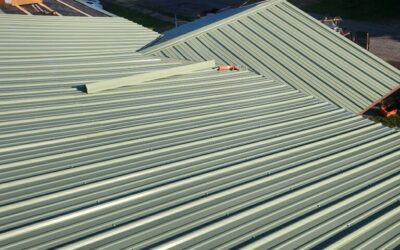PVC (Polyvinyl Chloride) roofing has become a popular choice for both commercial and residential buildings due to its durability, energy efficiency, and low maintenance requirements. However, like all roofing materials, it comes with its own set of advantages and disadvantages. This comprehensive guide will delve into the benefits and drawbacks of PVC roofing, helping you make an informed decision for your property.
What is PVC Roofing?
PVC roofing is a single-ply membrane made from polyvinyl chloride, a type of plastic known for its strength and flexibility. It’s commonly used on flat or low-slope roofs and is installed by heat-welding the seams, creating a watertight and durable surface. PVC roofs are reinforced with polyester or fiberglass to enhance their strength and longevity
Benefits of PVC Roofing
1. Durability and Longevity
One of the most significant advantages of PVC roofing is its durability. With proper maintenance, a PVC roof can last anywhere from 20 to 30 years. It’s built to withstand various weather conditions, including high winds, heavy rain, and even hail. (
2. Energy Efficiency
PVC roofing is known for its energy efficiency. The material’s reflective properties significantly reduce the amount of heat absorbed by your home or building, helping to keep indoor temperatures cooler. This can lead to lower energy bills and reduced strain on your HVAC system.
3. Low Maintenance
When it comes to upkeep, PVC roofing is about as low-maintenance as it gets. Routine inspections and occasional cleanings are usually all that’s needed to keep your roof in top condition.
4. Waterproof and Leak-Resistant
PVC roofing is inherently waterproof, offering excellent protection against leaks. The seams of PVC roofs are heat-welded, creating a seamless and watertight barrier that keeps moisture out.
5. Chemical Resistance
For industrial or commercial settings where exposure to chemicals is common, PVC roofing is an ideal choice. The material is highly resistant to chemicals, making it a durable option for these environments.
6. Fire Resistance
PVC roofing is also fire-resistant. It does not support combustion, burns slowly, and can even self-extinguish once the source of the flame is removed. This has been proven after being tested with FM and UL fires.
7. Resistance to Biological Growth
PVC roofing is resistant to mold, algae, and fungi growth, helping to maintain a clean and aesthetically pleasing appearance over time.
Drawbacks of PVC Roofing
1. Higher Initial Cost
PVC roofing tends to have a higher upfront cost compared to more traditional materials. However, the long-term benefits—such as durability, energy efficiency, and low maintenance—often justify this initial investment.
2. Installation Complexity
The quality of installation plays a crucial role in the performance of PVC roofing. Faulty installation or poor workmanship can lead to a range of issues, including leaks, seam failures, and premature aging. It’s vital to hire experienced and reputable roofing contractors to ensure your PVC roof is installed correctly.
3. Temperature Sensitivity
PVC roofing may not perform as well under extremely high heat conditions, and prolonged exposure to such conditions may cause the material to degrade or become discolored.
4. Older Roofs Have More Problems
Though the lifespan of PVC roofs is a hardy 20 or more years, it’s worth understanding that you will likely face additional repairs once the roof gets to be about ten years old. While this shouldn’t be a dealbreaker, you’ll want to take it into account when deciding whether the cost of a PVC roof is worth the longevity.
5. Doesn’t Do As Well in Cold Climates
PVC really isn’t a good choice for cold climates, as cold and icy conditions can cause PVC membranes to shatter. In order to prevent the entire roof from shattering, a reinforced PVC membrane will need to be used. Even when this reinforced PVC is used, shattering can still occur even though it won’t spread throughout the entire roof surface.
6. Shrinkage Over Time
As time passes, the PVC membrane will start to pull away from the surrounding walls on the roof because it shrinks over time. This can lead to leaks and costly repairs in the future if you aren’t attentive to your roof as it nears the end of its life.
7. Repair Challenges
When you’re getting a new roof, it’s easy to overlook considerations about what repairing the roof down the road will look like. However, it’s worth understanding that manufacturers use different formulations to produce PVC membranes. Not all PVC membranes are compatible with one another and won’t always weld to each other.
Conclusion
PVC roofing offers a range of benefits, including durability, energy efficiency, low maintenance, and resistance to various environmental factors. However, it also comes with drawbacks such as higher initial costs, installation complexity, and potential issues in extreme temperatures. By weighing these pros and cons, you can determine if PVC roofing is the right choice for your building.
 (440) 307-2060
(440) 307-2060

